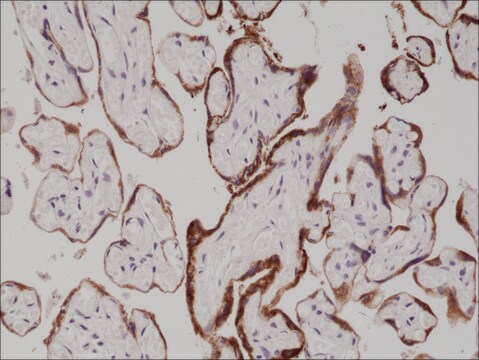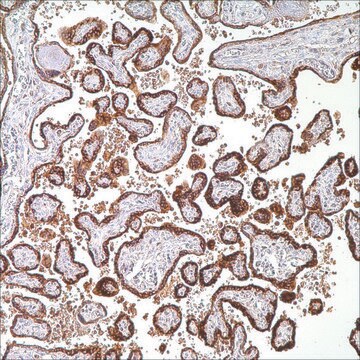C8534
Anti-Chorionic Gonadotropin (α+β subunits) (HCG) antibody produced in rabbit
whole antiserum
Synonym(s):
Chorionic Gonadotropin Antibody, HCG Antibody - Anti-Chorionic Gonadotropin (α+β subunits) (HCG) antibody produced in rabbit, Hcg Antibodies, Hcg Antibody
About This Item
Recommended Products
biological source
rabbit
Quality Level
conjugate
unconjugated
antibody form
whole antiserum
antibody product type
primary antibodies
clone
polyclonal
contains
15 mM sodium azide
species reactivity
human
technique(s)
immunohistochemistry: 1:100 using human placental tissue
radioimmunoassay: 1:50,000
UniProt accession no.
storage temp.
−20°C
target post-translational modification
unmodified
General description
Anti-Chorionic Gonadotropin (α + α subunits) antibody is specific for both α and β subunits of human chorionic gonadotropin.
Immunogen
Application
Reconstitution
Disclaimer
Not finding the right product?
Try our Product Selector Tool.
Storage Class
10 - Combustible liquids
wgk_germany
WGK 3
flash_point_f
Not applicable
flash_point_c
Not applicable
ppe
Eyeshields, Gloves, multi-purpose combination respirator cartridge (US)
Certificates of Analysis (COA)
Search for Certificates of Analysis (COA) by entering the products Lot/Batch Number. Lot and Batch Numbers can be found on a product’s label following the words ‘Lot’ or ‘Batch’.
Already Own This Product?
Find documentation for the products that you have recently purchased in the Document Library.
Customers Also Viewed
Our team of scientists has experience in all areas of research including Life Science, Material Science, Chemical Synthesis, Chromatography, Analytical and many others.
Contact Technical Service









